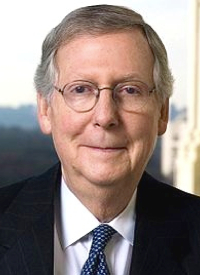
Democrats in Wisconsin’s State Assembly have asked for the removal of a portrait of Governor Jeremiah Rusk (left), who in 1886 ordered the state militia to keep peace during the Bay View Rolling Mill strike. Seven people were killed during that strike, and labor unions in Wisconsin have gotten their Democrat friends in the legislature to offer a resolution to take down Rusk’s picture down. “He ordered the National Guard to fire on people who were marching for an eight-hour workday, even though some of those marchers were children,” Reuters quoted resolution co-sponsor state Rep. Jon Richards as saying. “He is the last person we should be honoring in the state Capitol.”
The resolution, introduced on October 3 as Assembly Resolution 13, has nine cosponsors. The resolution states that "the assembly chief clerk shall remove the portrait of Jeremiah Rusk from public display in the assembly chamber, including the parlor, galleries, lobbies, offices of the speaker, majority leader, and minority leader, and hallways." The effort to remove the portrait began many years prior to this October. As reported by Reuters:
State Rep. Chris Sinicki, a Democrat from Milwaukee, said she and Richards have been working for the last 10 years to have the painting hanging in the state Assembly parlor removed. In May 2010, a black cross was placed over the painting during the anniversary of the Rolling Mill massacre, Sinicki said.
Sinicki linked Walker's efforts to limit the influence of labor unions with the actions of Rusk, Wisconsin's second-longest serving governor.
John Jagler, a spokesman for Republican Assembly Speaker Jeff Fitzgerald, replied: “We have bigger things to be talking about.”
Democrats are trying to link Governor Rusk’s actions 125 years ago to present Governor Scott Walker’s moves to limit what could be subject to collective bargaining for public-employees’ unions. Representative Christine Sinicki insisted: "When Governor Walker proposed his collective bargaining bill, instead of going to the table and trying to negotiate something, he bypassed that whole process and called out the National Guard because he knew there was going to be trouble on this. That is the way I feel about the Republican leadership right now."
Milwaukee historian John Gurda said Rusk did order the state militia into action, and that the militia subsequently took aim at union protesters, although the protesters themselves may have been threatening the militia with rocks and clubs. The strikers were seeking a shorter work week with the same pay. There are different accounts of what actually happened, although there is no doubt that the militia ultimately fired and that seven of the strikers were killed. There is also no doubt that Governor Rusk, a decorated Civil War veteran, felt that he had done the right thing.
Although in his political career in Wisconsin, Rusk was often involved in labor disputes, he actually gained national recognition as a supporter of striking railroad workers. After that Rusk did send the militia to preserve the peace in the Bay View Rolling Mill strike, but his explanation seems clear enough: “I seen my duty and I done it.” Most histories of the man describe Rusk as colorful, respected, and serious. Gurda put it: "He was not just unrepentant, he was proud." He was also never charged with any offense, never impeached for any wrongdoing, and never found culpable except among those who, for understandable personal reasons, disliked what he did at Bay View Rolling Mill.
But that is only a small part of why his portrait is hanging in the State Assembly. The career of Jeremiah McClain Rusk involved more just labor disputes. He grew up in a log cabin in Ohio and worked as a manual laborer for much of his youth — as a farmer, stage driver, and barrel maker. Rusk raised a regiment of volunteers during the Civil War and led them into battle, suffering serious injuries. He was decorated for his bravery, and no one questioned his courage. Rusk was also the first Secretary of Agriculture, a job in which he devoted much energy to improving the inspection of meat, creating more scientific agricultural methods, and fighting communicable cattle and horse diseases. He had been considered a possible presidential candidate as well, a path that he did not pursue.
What some observers believe that Democrats in the Wisconsin Assembly seem to want is to make this complex and larger-than-life man into a one-dimensional character. They note that Generals Ulysses S. Grant and Robert E. Lee fought on opposing sides of a vast and terrible American war, but the purging of either man from the historical art of America would do a disservice to the cultural heritage of the country. Both men — great in some ways and flawed in other ways — were part of the nation.
Critics say that what labor leaders in Wisconsin seem to want is more like the re-editing of Soviet art under Stalin. For example, portraits which showed four leaders of the revolution were later touched up so that Grigory Zinoviev simply vanished.
Note: Some additional information was added to this article as originally published, including the source for the quote in the first paragraph (see the "Source the Quote" comment below from "Carl.") Wisconsin Democratic State Rep. Jon Richards did refer to the National Guard according to Reuters but presumably was confusing the National Guard with the state militia.





